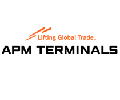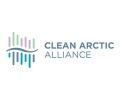A greener voyage: the EU emissions trading scheme finally given the all clear to set sail for maritime
 On 18 April 2023, the European Parliament voted in favour of the legislative amendments published on 8 February 2023 to the EU Emissions Trading Directive (the “Amendment”) to include the maritime sector in the EU’s Emissions Trading Scheme (“EU ETS”).
On 18 April 2023, the European Parliament voted in favour of the legislative amendments published on 8 February 2023 to the EU Emissions Trading Directive (the “Amendment”) to include the maritime sector in the EU’s Emissions Trading Scheme (“EU ETS”).
The inclusion of the maritime sector in the EU ETS has been on the horizon for at least two years while the final form of the proposed amendment to Directive 2003/87/EC (the “ETS Directive”) establishing a system for greenhouse gas emission allowance trading within the EU has gone back and forth between the European Commission, the Council of the European Union and the European Parliament. From the day the original proposal was tabled on 14 July 2021 as part of the ‘Fit for 55’ package of proposals to today’s date, Watson Farley & Williams (“WFW”) has tracked the potential amendments and consequences for shipowners, managers, charterers and other maritime participants.¹ At long last those stakeholders can plan their operations with a greater degree of certainty and some of the multifaceted ramifications of this development are set out below.
“The EU ETS will be extended to cover Maritime Transport in respect of (i) 100% of the emissions from intra-EU maritime voyages; (ii) 100% of emissions from ships at berth in EU ports; and (iii) 50% of emissions from voyages which start or end at EU ports, where the other destination is outside of the EU.”
UPDATE ON CARBON TRADING
Carbon allowances hit an all-time high in mid-February 2023 by trading at €101 per carbon tonne. Allowances are (as of 18 April 2023) trading at €95.31/tonne.²The secondary market for carbon is therefore both lucrative and costly depending on the carbon intensity of an entity’s operations.
Please refer to our previous article for a recap of what the EU ETS is. We will also refer to the EU MRV within this article, which is the monitoring, reporting and verification framework of carbon dioxide emissions from maritime transport, as established under Regulation (EU) 2015/757 of the European Parliament and of the Council (“EU MRV”). The emissions will therefore be verified in compliance with data produced under the EU MRV.
PREPARING FOR 2024: EU ETS UPDATES FOR THE MARITIME SECTOR
We summarise the key amendments to the Agreed Text below:
Scope – ships
Ships above 5000 GT and transporting cargo or passengers for commercial purposes (“Maritime Transport”) will be covered from 1 January 2024, while ships between 400 and 5000 GT fall outside of the EU ETS. However, in line with the inclusion of these exempt ships under the EU MRV from 2024, the Commission will review the possibility of including the exempt ships by the end of 2024.
The Commission will then present a report to the EU Parliament and the Council by the end of 2026 on the possibility of including exempt ships within EU ETS.
Scope – emissions
The EU ETS will be extended to cover Maritime Transport in respect of (i) 100% of the emissions from intra-EU maritime voyages; (ii) 100% of emissions from ships at berth in EU ports; and (iii) 50% of emissions from voyages which start or end at EU ports, where the other destination is outside of the EU. The Amendment also provides that if the IMO fails to introduce a global market-based mechanism (“MBM”) similar to the EU ETS or in the form of a global carbon levy then the Commission will consider whether to capture “more than” 50% of international emissions from ships after 2028. This aspect of the Amendment has been watered down from the originally proposed 100% of international emissions being captured from ships in the absence of an IMO MBM.
The Amendment also amends the definition of “port of call” to exclude a stop at a neighbouring container transhipment port less than 300 nautical miles from a port inside the EU, therefore preventing ships from calling at a nearby non-EU port and surrendering a much smaller amount of allowances in respect of the short voyage from the nearby port to the EU. It is expected that the Commission will publish a list of such neighbouring ports through implementing acts by the end of 2023 and these will be updated every two years.
The Amendment also contains some geographical exemptions, for example a voyage between a port in an outermost region of a Member State to another port within the same Member State.
The emissions covered from 2024 will be carbon dioxide from Maritime Transport. However, from 1 January 2026, emissions under the EU ETS will be extended to cover methane and nitrous oxide.
Phased surrender and allowances
A shipping company will be required to surrender allowances by 30 September of each year incrementally as follows:
(i) 40% of emissions in 2025, for its 2024 verified emissions;
(ii) 70% of emissions in 2026, for its 2025 verified emissions; and
(iii) 100% of emissions in 2027 (and thereafter), for its 2026 verified emissions (and each year thereafter).
In June 2022, it was proposed that as of 2024, 100% of the verified emissions of shipping companies reported for the previous year would have to be surrendered. The reintroduction of the incremental phase-in is intended to allow maritime to adjust to its obligations and incorporate these into future operations more smoothly.
The Amendment proposes that 78.4m allowances will be allocated to Maritime Transport by auction and, unlike aviation, there will be no free allocation of allowances. Surplus allowances not yet auctioned will be cancelled rather than available for trading on the secondary market.
Who is responsible for compliance?
The “shipping company” in the Amendment (in line with the EU MRV) is defined widely as the shipowner or any other organisation or person, such as the manager or bareboat charterer of a ship, that has assumed (contractually) the responsibility for the operation of the ship from the shipowner and that, on assuming such responsibility, has agreed to take over all the duties and responsibilities imposed by the International Management Code for the Safe Operation of Ships and for Pollution Prevention. This is usually the entity responsible for the choice of fuel, route and speed of the ship – i.e. the factors affecting the emissions of the ship – however arrangements may vary depending on what has been agreed in the ship management services agreements and/or the charterparties applicable to the ship.
Article 3gc mandatory and binding EU ETS costs clause – recovering the costs of compliance
Article 3gc cements the “polluter pays” principle in the EU ETS by empowering ship owners with the right to recover EU ETS compliance costs from the entity that is ultimately responsible for the “operation of the ship”. This applies where there is a contractual arrangement between the shipping company (such as a ship manager) and the entity ultimately responsible for the purchase of the fuel and/or the operation of the ship. “Operation of the ship” means determining the cargo carried by, or the route or speed of, the ship.
The Amendment imposes an obligation on Member States to transpose the Amendment into national legislation by 31 December 2023 which will mandate the EU ETS costs clause. This is intended to ensure that the shipping company is reimbursed by the entity responsible for the operation of the ship for the costs arising from the surrender of EU ETS allowances. The Amendment calls for a mandatory EU ETS costs clause to be introduced into contractual arrangements. However, it is unclear how this will work in practice – particularly if the parties to a contract fail to include an EU ETS costs clause or include a provision that does not satisfy the mandatory requirements. Further uncertainty stems from the fact that most international maritime management and employment contracts are governed by English law, which – since Brexit – falls outside the EU sphere.
What is certain, however, is that regulatory responsibility sits with the shipping company. Whilst a contractual mechanism is provided for reimbursement, a shipping company cannot contract out of a liability for compliance with EU ETS – the shipping company that registers as an EU ETS participant in the EU Registry will remain the responsible entity for surrendering allowances and overall compliance with each applicable Member State’s national law. This means that even though liability can be apportioned contractually, ultimate responsibility to the EU lies with the registered shipping company, which is, therefore, taking commercial risk on its counterparties.
Innovation Fund
Previous proposed amendments to the ETS Directive considered establishing an Ocean Fund dedicated to supporting the transition to energy efficiency and climate resilience in the EU maritime sector. The spirit of the Ocean Fund has been wrapped up into the existing Innovation Fund under the Amendment but with a focus on innovation in low and zero carbon technologies that would contribute significantly to decarbonisation of the maritime sector and to which the Commission would give special attention to in its call for proposals. The fund would also cover investment in the energy efficiency of ships, ports and short-sea shipping and in sustainable alternative fuels. The dedication of 15% of the fund to contribute to the protection, restoration and better management of marine ecosystems impacted by global warming, however, has been scrapped.
The Amendment proposes allocation of an additional 20m allowances specifically for maritime for the period up to 2030 (bringing the total to 80m allowances which could be auctioned and 345m which could be allocated for free). The funds raised from the auction of such allowances will be used for the purposes referred to in the preceding paragraph. This is a significant drop from the proposal under the Ocean Fund to earmark 75% of revenues from allowances under the EU ETS and the FuelEU Maritime initiative to decarbonise the maritime sector and we discuss some possible implications of this below.
IMPLICATIONS
Early preparation ahead of the 2024 start date is key. Significant emissions reporting procedures will have to be put in place, potentially at significant cost, to prepare for and manage the administrative aspect of EU ETS compliance. From a risk management perspective, shipping companies that put in place new data management systems, which take on or train designated personnel and which include robust costs recovery and other protection mechanisms in their contracts will be best prepared for the 2024 start date. Careful consideration should be afforded to all operational contracts (existing and future), including ship management, service and employment agreement terms as. This will necessitate an assessment of existing arrangements from a fresh perspective in addition to the need to take these factors into account in the future.
Aside from the above we have set out a few more key takeaways below:
- EU ETS costs clause: in lieu of waiting for Member States to transpose the EU ETS costs mechanism into national legislation, shipping companies should be making provision for this in their contracts from initial discussions and through the drafting and negotiation stage, taking comfort from the regulatory support for passing on compliance costs. WFW has a number of solutions at hand to help shipping companies prepare. While standard industry clauses are sometimes helpful starting points for negotiation, they will of necessity have their own limitations, which is why bespoke drafting solutions for this very significant regulatory change are strongly recommended. It is also useful to develop a robust EU ETS costs clause now given that the transposition of the Amendment and this provision in particular by Member States is likely to be fragmented. The brevity in the Amendment about the EU ETS costs clauses places a larger burden on Member States to set out what this contractual clause should look like, which inevitably causes uncertainty as to the end result across the EU.
- Preparation: compliance is to be on a company-wide rather than per-ship basis. Given the nature of ship owning and operational structures, involving the use of special purpose vehicle companies, and with individual ship’s operations not necessarily forming part of a cohesive whole, this presents its own challenges. For ships trading to, from and within the EU, aggregation (or dis-aggregation) of ships under common beneficial ownership into specific corporate groups with separate EU ETS participation may be the way forward. The first step would be to organise the fleet along EU ETS lines and to determine which entity or entities will register as an ETS participant shipping company. The next step will be the registration process itself, which will have to be done via the Union Registry which will manage the allowances electronically. Each of the Union Registries may be found in the link below.³ Shipping companies should also consider who their administering authority for the purpose of the EU ETS is. For EU-registered companies, it will be the Member State in which the company is registered. There are different rules for non-EU companies depending on the nature of their voyages, which WFW can advise on.
- LNG: owners and operators of LNG carriers and LNG-fuelled vessels, and those planning to purchase such vessels, should consider the impact of the future inclusion of methane under EU ETS on their operations. LNG is considered as a transitional fuel between heavy fuel oil and zero-emissions and consequently has been a source of investment for the maritime sector. However, 85-95% of LNG is made up of CH₄ and methane slip or leakage⁴ has been the subject of much discussion, with a significant increase in slippage predicted by 2030. The future inclusion of methane in the EU MRV from 2024, under EU ETS from 2026 and under FuelEU Maritime⁵ is therefore timely. Vessels with more methane slippage are likely to be more expensive to operate under the EU ETS and that needs to be factored in when considering future orders and operation of such ships.
- Ocean fund: while around €2bn⁶ will be made available to maritime under the Innovation Fund, not all revenue will be fed back into a maritime sector in which it is acknowledged that there is a lack of funds and infrastructure to support decarbonisation. In our report ‘The Sustainability Imperative – Part 2’ explored below, the cost gap between fossil fuels and low- and zero-emission fuels was identified as holding back demand for such fuel types and, according to our report, approximately one quarter of the maritime industry feels this gap should be addressed by government subsidies and investment. These fuel types are targeted by the Innovation Fund. However, the Innovation Fund proposes a much smaller amount of revenue allocation for development of such fuels, alongside other innovations to pivot maritime towards decarbonisation, than the Ocean Fund. Two potential effects stem from this:
1) Deterrence from decarbonisation: if the resulting effect of the EU ETS is that it is considered administratively burdensome on shipping companies with too little benefit by way of subsidies or investment back into maritime to promote emissions reduction, will this dissuade shipping companies from embarking on emissions reduction efforts and will payment for allowances simply be absorbed and passed on as if it were a tax or levy?
2) Venue shopping: a greater amount of revenue will be retained by individual Member States.⁷ The ETS Directive mandates that the revenue from auctioning allowances shall be used by Member States for developing climate and energy transition-related measures, including decarbonisation in maritime. Such efforts and the infrastructure available to implement those measures are likely to differ across Member States and the move away from a centralised fund to state-by-state efforts could impact a harmonised energy transition and climate change effort across the EU. Shipping companies, or groups of companies, could potentially be incentivised to organise registration with those Member States with less stringent enforcement, and to orchestrate lobbying accordingly, thereby potentially weakening decarbonisation efforts.
- The Sustainability Imperative – Part 2’: On 23 March 2023, we published our new maritime report ‘The Sustainability Imperative – Part 2’. The report provides valuable insights into what the shipping industry believes are maritime’s biggest challenges. Interestingly, the nearly 500 senior respondents who took part in our survey claim to have a better understanding of ESG challenges and are more concerned with what fuel and which technology to invest in rather than where to source the money for the investment. Development of feasible technologies and low- and zero- carbon fuels through EU funding would increase and speed up their availability across the EU (and globally) for uptake by shipping companies. This is particularly true in the earlier and more risky stages of development where private investors may be more reluctant to invest. The shrinking of EU funds available by scrapping the Ocean Fund could have a direct impact on the amount of decarbonisation options available to shipping companies. The report also elicits that shipping companies accept the need for carbon trading and carbon offsets, which will be important for emissions reduction, according to 91% of respondents. Whilst respondents agree that carbon trading and offsetting will form part of the mix of solutions in reaching Net Zero, there is still no consensus on pricing. This uncertainty is bound to change, however, now that Maritime EU ETS has become enshrined in law.
It remains to be seen whether making the polluter pay will be enough to change behaviours, or whether the additional costs will be absorbed. It is not inconceivable, however, that a favourable shift will be observed among some of the leading maritime players such that the more they decarbonise as a result of EU ETS, FuelEU Maritime, EEXI and CII,⁸ the more their expenditure on carbon allowances will likely diminish.
While the inclusion of maritime in EU ETS has been long-waited, maritime actors are likely to have questions when it comes to implementation in 2024. WFW are planning a detailed webinar on the amended EU ETS in the near future which will consider its impacts on the wide range of actors that come under “shipping company” as well as the maritime sector’s decarbonisation efforts – particularly in view of the scrapping of the Ocean Fund.
Should you have any immediate questions on the above or how the Amendment could affect your operations please approach Nick Walker or Valentina Keys.
Source: Watson Farley & Williams LLP

 Hellenic Shipping News Worldwide Hellenic Shipping News Worldwide, Online Daily Newspaper on Hellenic and International Shipping
Hellenic Shipping News Worldwide Hellenic Shipping News Worldwide, Online Daily Newspaper on Hellenic and International Shipping





















 PG-Software
PG-Software